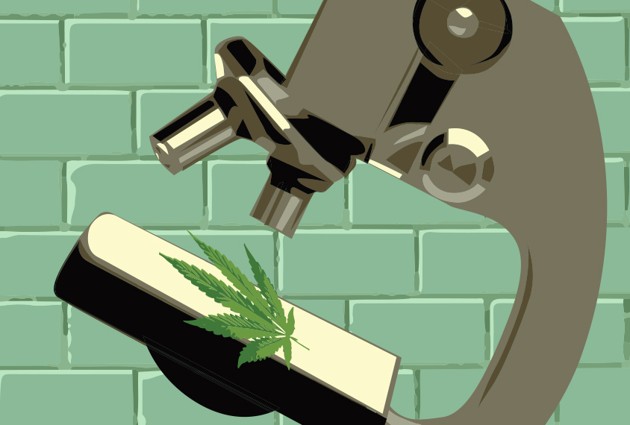CBG (Cannabigerol): Effect and Properties
List of contents
CBG (cannabigerol) is one of the more than 100 cannabinoids found in marijuana, but, because it is present in very low levels in most varieties (generally between 0.1 - 0.5%) it is considered a minor cannabinoid. However, the importance it is acquiring in recent times makes it one of the compounds with the greatest potential for therapeutic treatments based on this plant.
Despite its medicinal potential, the difficulty of producing large quantities of CBG has hampered its research and commercialization. The extraction of CBG is very expensive, since it requires a lot of biomass and the use of highly specialized equipment, which is why it has also been called the 'Rolls Royce of cannabinoids.' In fact, CBG prices are five times, or more, higher than those for CBD. But this has changed quite recently, as, thanks to the development of new genetics rich in CBG, it has been possible to obtain it more effectively, thereby opening the door to large-scale legal production.
However, the story of CBG begins much earlier: it was first isolated back in 1964, when Israeli chemist Raphael Mechoulam and his colleague Yechiel Gaoni at the Hebrew University of Jerusalem were researching the pathways of cannabinoid biosynthesis in cannabis. There was a big question they needed to answer: where did all those compounds in the plant that interact with our endocannabinoid system come from? They soon figured it out, finding the missing link by which many cannabinoids derived from enzymatic reactions begin their lives as CBGA.
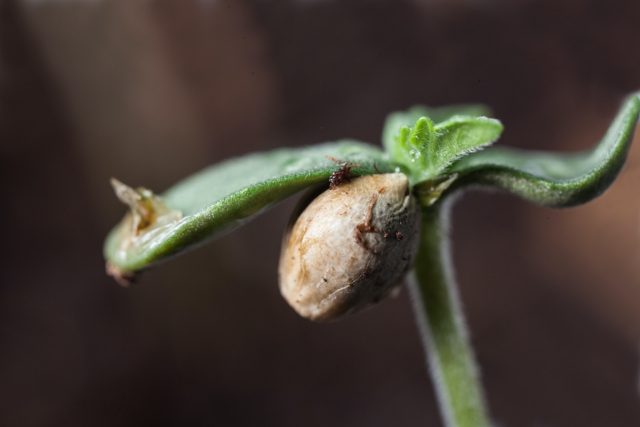
How is CBG formed?
Fresh cannabis plants produce cannabigerolic acid (CBGA), which is the precursor to the three main lines of cannabinoids: tetrahydrocannabinolic acid (THCA), cannabidiolic acid (CBDA) and cannabichromenic acid (CBCA). In fact, this acid is known as 'the mother of all cannabinoids' because as the cannabis plant matures, specific enzymes in the plant break down CBGA and "direct" it to one of these three lines.
Subsequently, when acidic cannabinoids are exposed to light or heat they shift to their non-acidic form in a process called decarboxylation, transforming into THC, CBD and other minority cannabinoids. As a result, CBGA virtually disappears, as it is only a brief way station; in most strains, CBGA is immediately converted into THCA or CBDA. Therefore, more THC means less CBG and CBD (and vice versa), due to the nature of how these compounds are synthesized.
What are the properties of CBG?
Research suggests that CBG has a partial affinity for the CB1 and CB2 receptors of the endocannabinoid system, as does THC, which also produces its psychoactive effects through interactions with these receptors, but CBG has been observed to act as a mitigator of this psychoactivity, and may even alleviate the feelings of anxiety or paranoia that sometimes accompany the consumption of high levels of THC.
CBG can also stimulate other receptors through other pathways. In fact, it has demonstrated a strong ability to increase anandamide, commonly known as 'the happiness molecule', an endogenous cannabinoid that helps regulate a wide range of bodily functions, including appetite, sleep, mood and the immune system.
Research on CBG is still at a preclinical stage, but the available studies suggest that it holds considerable therapeutic promise, and could be the next major player in cannabis treatments, in the wake of the CBD boom. Its analgesic properties may exceed those of THC, without the psychoactive effect, and there is also evidence to suggest that CBG may offer anti-cancer and anti-bacterial qualities.
In fact, scientists are excited about these initial results on CBG and are promoting future research for the treatment of multiple diseases. Because it is non-psychoactive, CBG boasts a wide range of potential applications, not only for the problems mentioned above, but also as a pain reliever, in psoriasis therapy, and even as an antidepressant.
However, largely due to the scarcity of CBG products for research, researchers have yet to determine their safety and potential long-term side effects, as well as the risk of drug interactions.
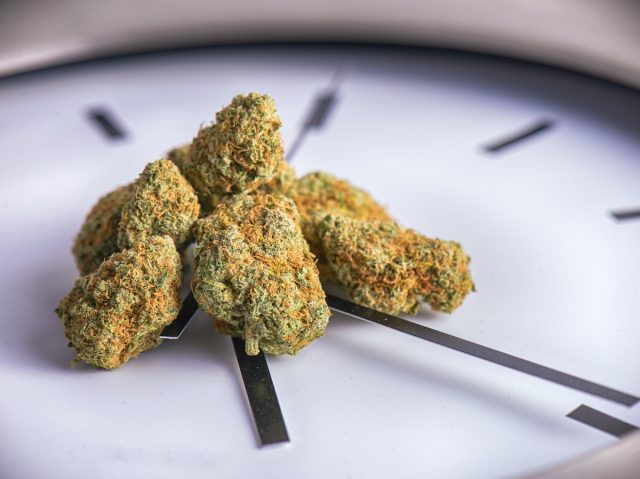
How is CBG different from CBD?
Preclinical studies suggest that CBG may share many beneficial characteristics with CBD. But, as mentioned above, CBG helps produce CBD. Thus, while both are cannabinoids, they are also different compounds within the cannabis plant. Having different purposes, they can help treat different ailments, despite a possible pharmacological overlap. For example:
Diminishing the effects of THC
Both CBG and CBD are currently considered non-psychoactive, meaning that they will not alter your mental state in a way that inhibits your daily functioning or mental clarity. This means that if you consume cannabis that has a high concentration of CBD and CBG, or consume a CBG isolate in addition to consuming (smoking or eating) cannabis, you may be able to counteract the "high" or intoxication of THC. There is CBG naturally found in the cannabis you are already consuming, but probably not in a large enough quantity to make a difference.
Pharmacology
CBD and CBG also activate receptors differently. For example, a 2011 study published in Psychopharmacology compared the effects of CBD and CBG on the serotonin 5-HT1A receptor. CBD appears to exert its anti-nausea effects through its affinity for the 5-HT1A receptor, acting as an agonist (activator). CBG, on the other hand, behaves as an antagonist (blocker) of the 5-HT1A receptor. The findings showed that pretreatment with CBG blocked the antiemetic effects of CBD, suggesting that the two cannabinoids bound to the same site, but had opposite actions on this receptor.
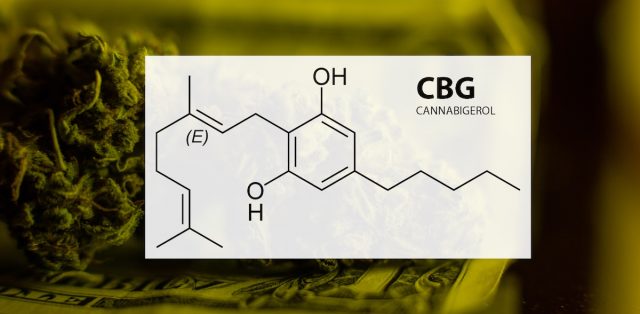
Another important way in which CBG differs from CBD has to do with appetite stimulation. Research in rats showed that doses of CBG encouraged the animals to eat more than twice their normal food intake. In another study, cannabigerol did not induce any change in feeding behavior, but cannabidiol significantly reduced total food intake. In addition, CBG is different from another phytocannabinoid, THCV, which also inhibits appetite and can lead to weight loss.
It may also reduce inflammation associated with inflammatory bowel disease
According to a 2013 study in mice. Another study in 2014 found that it can even reduce the growth rates of cancer cells and other tumours in rats with colon cancer. Meanwhile, other research has also found that the substance may also be beneficial in treating glaucoma, bladder dysfunctions, Huntington's disease and bacterial infections.
Some lesser known Cannabinoids
These are the cannabinoids you need to know about! Don't think you know it all because you may have heard of CBD. the cannabis plant is way more complex than just THC and CBD. Many different cannabinoids can be found there. Click here to find out all about them at Philosopher Seeds!
How is CBG obtained?
While CBD and THC are found in amounts up to 20% of the plant’s composition by weight, in well-matured cannabis flowers CBG is virtually non-existent, accounting for around less than 1%. This means growers need 20 times more biomass to obtain the same amount of CBG as a typical yield of CBD or THC.
Growers can harvest their plants a little earlier than normal in order to increase CBG yield, avoiding the breakdown of CBGA from light and heat, but they won't get much more either (you can get as little as 1% to 3%). However, a premature harvest to justify extracting a moderate amount of CBG sacrifices other potential compounds, so most growers are reluctant to harvest their plants so early and forgo other cannabinoids in favor of so little CBG.
To obtain higher yields of CBG, seed bank breeders have had to experiment with genetic selection to increase its concentration. They have also successfully identified the optimal extraction window in order to preserve the highest amounts of CBG, recommending around six weeks into an eight-week flowering cycle.
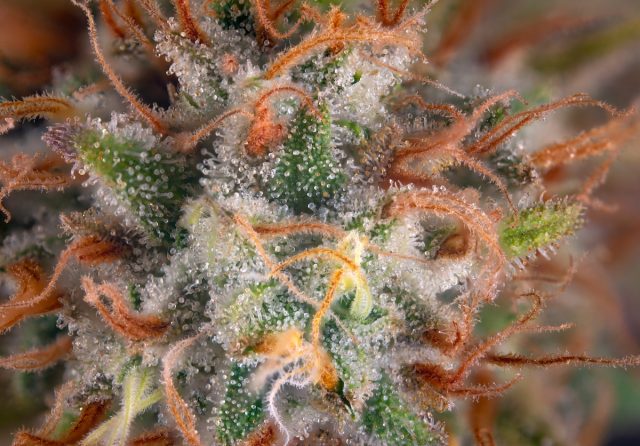
Pure CBG by Philosopher Seeds
This is where seed banks like Philosopher Seeds come in, as thanks to our breeders’ work we have been able to present on the market, coinciding with the celebration of Spannabis 2022, a Pure CBG variety that offers a new experience in the world of cannabis, as this is a genetic with an incredibly high percentage of CBG (12%) and one that is very low in THC, below 0.2%, which makes this cannabis legal almost all over the world.
This is a percentage of CBG that until now was almost impossible to achieve in cannabis strains at a commercial level, a ratio restricted to genetic laboratories that had managed to block some steps of the cannabinoid biosynthetic pathway, preventing the formation of tetrahydrocannabinol (THC) while increasing the accumulation of cannabigerol (CBG), which was previously found in residual amounts.
In the case of our Pure CBG variety from Philosopher Seeds, thanks to the selection of phenotypes through genetic markers, we have produced a fast-flowering plant - only 50 days - featuring a very Indica structural profile, with compact and highly branched plants that are very hardy, vigorous and boast impressive yields of CBG-rich flowers, making a new paradigm a reality both for the medical community and for cannabis growers looking for new sensations based on this cannabinoid that, if nothing prevents it, is destined to be the new CBD.
References:
- Cannabigerol is a novel, well-tolerated appetite stimulant in pre-satiated rats. Daniel I Brierley, James Samuels, Marnie Duncan, Benjamin J Whalley & Claire M Williams.
- Cannabinol and cannabidiol exert opposing effects on rat feeding patterns. Jonathan A Farrimond, Benjamin J Whalley & Claire M Williams.
- Beneficial effect of the non-psychotropic plant cannabinoid cannabigerol on experimental inflammatory bowel disease. Francesca Borrelli, Ines Fasolino, Barbara Romano, Raffaele Capasso, Francesco Maiello & Diana Coppola.
- Colon carcinogenesis is inhibited by the TRPM8 antagonist cannabigerol, a Cannabis-derived non-psychotropic cannabinoid. Francesca Borrelli, Ester Pagano, Barbara Romano, Stefania Panzera & Francesco Maiello.
